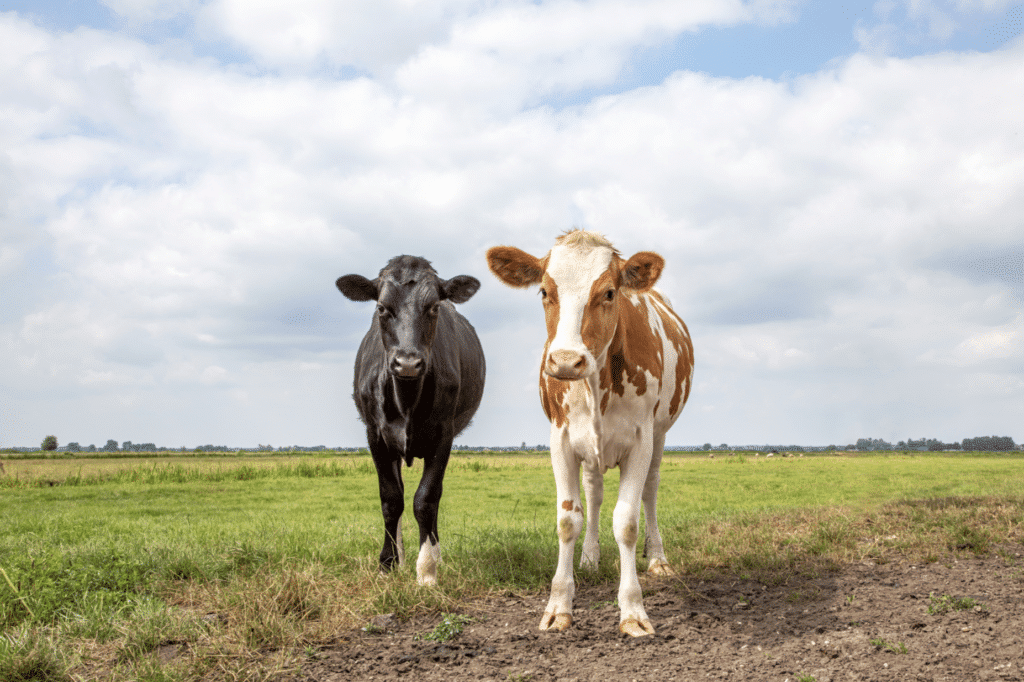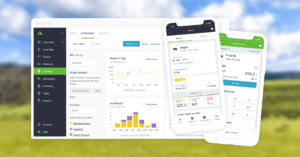Best Practices for Calf Vaccination in the United States

How you approach your calf vaccination strategy has a big impact on the overall outcome of your calving season. Considering these practices can help you prepare for a successful calving season.
Giving your Calves the Best Start Through Vaccination
Calving season is one of the most rewarding times on the ranch, but often it is also one of the most stressful. As well as being labor-intensive, with long hours, you also have to ensure that calves on the ground will not only survive, but thrive.
The work to foster healthy offspring starts well before calving, of course. Sufficient nutrition and a healthy environment for your cow herd are central to newborns’ health and well-being. As well as having more robust offspring, cows in better body condition produce more colostrum.
Colostrum – the fatty, nutrient-rich first milk of cows – allows vaccinated dams to pass on antibodies to their calves. This gives calves “passive immunity”, to help protect against diseases they may encounter before their own immune system is better developed.

The Importance of Calf Vaccination
Calves need to consume around five percent of their body weight in colostrum within four-to-six hours of birth for the best health results. But even then, the antibodies they receive don’t offer lifelong protection. Levels drop within days and only last a few months.
Come weaning time, calves will be particularly susceptible to illness. As they suffer stress caused by a new environment and changing diet, it’s imperative you have a health plan to ensure they can fight disease.
Vaccinating a calf develops active immunity, which means the animal can produce its own antibodies. It trains the calf’s immune system to recognize disease-causing viruses, bacteria, and pathogens, to better respond when exposed to them in the real world.
Diseases to Guard Against
It’s worth talking with a local veterinarian to work out the disease risk for your herd, as the threat of particular diseases varies according to the location and your management system.
Calves are most commonly vaccinated for clostridial diseases, as clostridial bacteria are found in the soil virtually everywhere livestock have been kept. Animals become infected by ingesting feed or pasture contaminated with clostridial spores.
Clostridial infections such as blackleg, malignant edema, black disease, and enterotoxemia have a sudden onset and severe outcomes. Response to treatment is poor and most affected animals die, making vaccination all the more critical.
A good calf vaccination plan should also consider where your calves will end up. Bovine respiratory disease (BRD) complex, or shipping fever, is a damaging disease in feedlot cattle, leading to medical treatment costs, decreased daily weight gain, and deaths.
Vaccination against respiratory viruses such as infectious bovine rhinotracheitis (IBR), bovine viral diarrhea virus types or BVD), and bovine respiratory syncytial virus (BRSV) can reduce losses caused by BRD.
When to Vaccinate
The time you choose to vaccinate will be influenced by your production system. Generally, vaccinations are given at two to three months to produce active immunity. “Booster” calf vaccinations at or near weaning mean calves are even better prepared to fight actual disease challenges.
If you are weighing and tagging your cattle at birth, it can make sense to vaccinate at the same time. Animals that show less vigor and are slow to consume colostrum will be better protected, as will calves born to dams purchased with an unknown vaccination history. Studies have shown that a calf’s maternal antibodies can diminish vaccine effectiveness, though this isn’t an issue with intranasal vaccines, and clostridial vaccines are relatively cheap.
Again, talk with your veterinarian to develop the most effective (or practical) vaccination schedule for your operation.

The Importance of Calf Vaccination Records
Keeping detailed, accurate vaccinations records will pay dividends for your ranch. An effective vaccination program – and evidence of it – is a part of a number of value-added programs; it’s central to programs like VAC-45, which means cattle undergo an intensive health vaccination program and are weaned at least 45 days before reaching the feedyard.
Vaccination records, combined with reports around weight gains and animal cost of production, will also enable you to make a detailed cost-benefit analysis of your vaccination program. As you accrue date across years, you can draw valuable conclusions about the most cost-effective vaccination program for your ranch.
Using AgriWebb ranch management software, you/us/increasing-profits-from-your-beef-cattle-enterprise/ are able to record vaccinations as they are administered, on your mobile device. It means that your records are always accurate and up-to-date. Being stored in the cloud, it is simple to share information with your veterinarian, who can identify any shortcomings in the schedule or offer suggestions to improve it, as new


